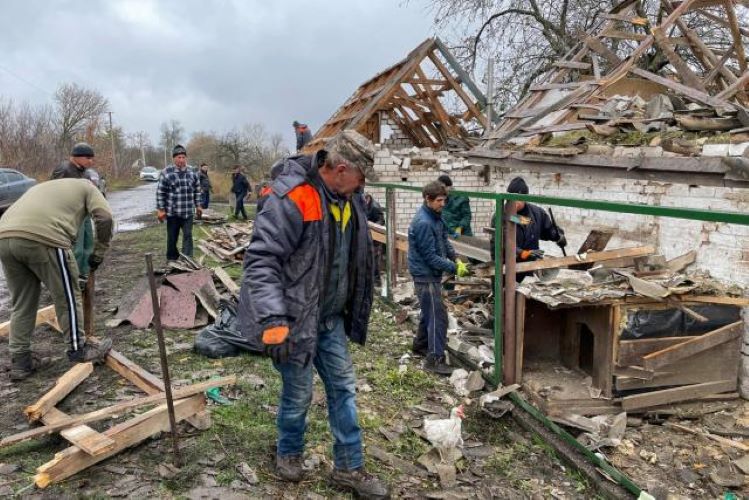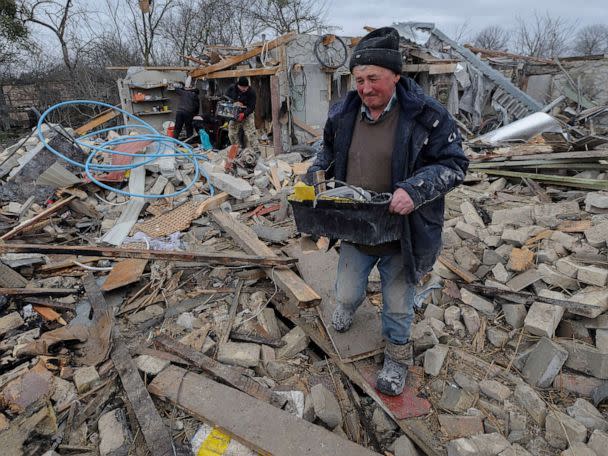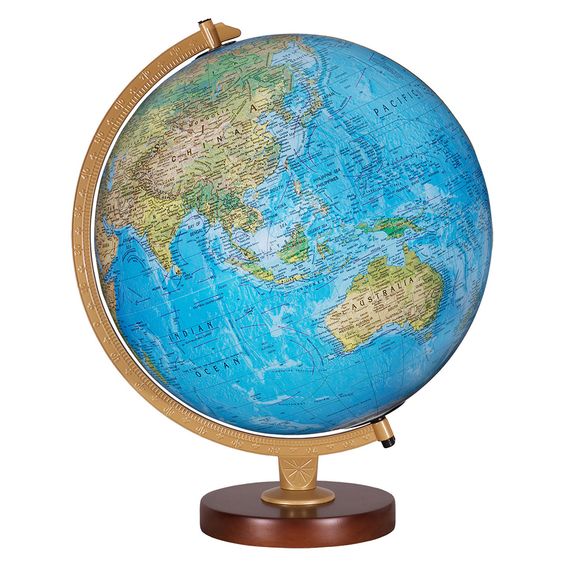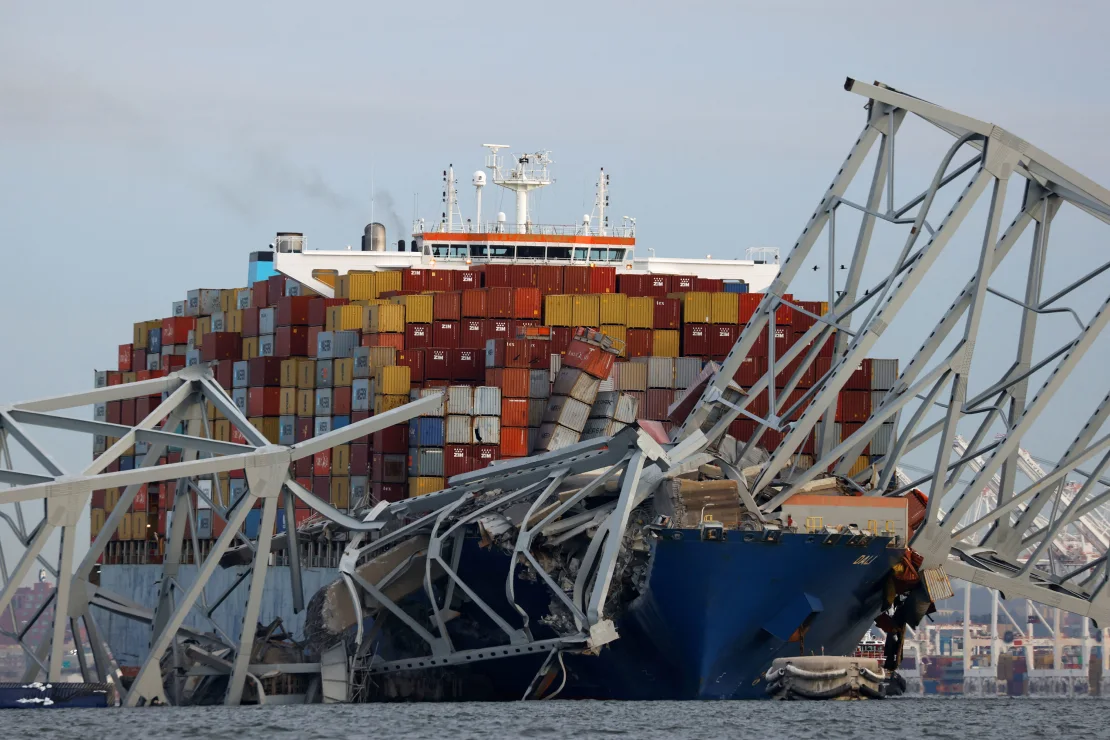
Too often the political choice is not between good and bad or moral and immoral. It is between bad and worse.
By Tom Arms
Too often the political choice is not between good and bad or moral and immoral. It is between bad and worse.
Ukraine’s President Vlodomyr Zelensky is facing just such a choice. And he must decide soon or sooner.
Eastern Europe’s bitter winter is coming to a close. The spring thaw and rains are turning the wheat fields into mudflats. But summer is coming and the ground will be hard, flat and ready for tanks.
It is strategic decision time. Does Zelensky abandon the counter-offensive hopes of last summer, withdraw to defensible positions and start digging trenches, laying minefields and constructing tank traps? If he does he will be building a man-made hard border that separates the Donetsk Region from the rest of Ukraine with physical obstacles and increases the possibility of the permanent loss of Eastern Ukraine to Russia.
If the Ukrainian leader does concentrate on strengthening his defences by summer, then he runs the risk of the Russian steamroller breaking through all the way to Kyiv.
His decision-making window is small and closing. By May the ground should be suitable for a tank attack. Russian Defence Minister Sergei Shoigu is reported to have 350-500,000 fresh troops ready to move into the front line. And Putin is expected to use his recent electoral victory to justify another mobilization.
 Zelensky made the decision to make a stand at the factory town of Avdiika. He lost. It cost the Russians an estimated 17,000 lives, but they have eliminated a Ukrainian foothold in the Donetsk Region and improved their position for a spring offensive. Ukraine’s battle for Avdiika was at the expense of building defensive fortifications elsewhere along the 600-mile front line.
Zelensky made the decision to make a stand at the factory town of Avdiika. He lost. It cost the Russians an estimated 17,000 lives, but they have eliminated a Ukrainian foothold in the Donetsk Region and improved their position for a spring offensive. Ukraine’s battle for Avdiika was at the expense of building defensive fortifications elsewhere along the 600-mile front line.
Key elements throughout the Ukraine War have been artillery, drones and air defences. Russian armaments factories are now churning out three million shells a year and Putin has secured a regular additional flow from North Korea and Iran. Putin’s artillery and now firing five shells for every Ukrainian one. He clearly has been mobilizing and planning for war for years—and his planning is paying dividends.
The EU promised a million-plus artillery shells by the beginning of this year. It came up with just half that amount and will only be up to 1.4 million by the end of this year. The Czechs, Danes, Poles, Germans, Canadians and Dutch have clubbed together to buy shells on the world market and are said to have found 800,000 which have given the Ukrainians “breathing space” until more weaponry can be bought and rushed to the front.
As important are drones and drone interceptors. The Ukrainians are running out of both. The interceptors are especially important because they were protection against Russian missiles knocking out key infrastructure targets. The drones have, to a certain extent, compensated for the shortfall in artillery. But drone stocks are now running low as well.
Of course, Ukraine’s problems would be eased considerably if America’s Speaker of the House of Representatives, Mike Johnson, would allow a vote on the $61 billion military aid package for Ukraine. History will not be kind to the Republican Christian nationalist. The House of Representatives has now gone into its Easter recess and won’t return to Washington until 22 April.
It would also help if German Chancellor Olof Scholz gave the Ukrainians the German Taurus missile which would enable the Ukrainians to hit more targets inside Russia. The British and French have sent similar long-range Scalp and Storm Shadow missiles, but those stocks are starting to run low. Scholz refuses to send the German-Swedish weapons for fear that it would lead to an escalation in the fighting. Scholz, however, is facing growing opposition to his stand from both the CDU opposition and from within his governing coalition.
Another problem is the size and age of the Ukrainian army and Ukraine’s conscription laws. The average of a Ukrainian soldier is 43. This is because the minimum conscription age is 27. Legislation is currently working its way through the Ukrainian parliament to lower the conscription age—to 25. But the legislation is being held up with a staggering 1,000 amendments.
The one bit of good news is on the high seas. Ukrainian drones and ships have are winning the naval war in the Black Sea. They have opened up the routes in and out of the Odessa, blown up key Russian ships and naval installations, and kept the Russian navy largely bottled up in its Sevastopol base.
Don’t give up on the Ukrainians. The odds are that eventually the US military aid will be released. Scholz will probably send the Taurus missiles and more artillery shells will be found for Ukrainian howitzers. It is just a matter of time. In the meantime the Ukrainians must concentrate on a defensive strategy. The generally accepted defensive military equation is one defensive unit can hold off up to ten attacking units. But that involves a hard, in depth defensive line which would create the politically unacceptable border hiving off Eastern Ukraine.
 World Review
World Review
The Baltimore Bridge disaster was more than a fatal human tragedy. It was a commercial and trading disaster which starts in Baltimore and ripples well beyond American shores.
But let’s start with Baltimore and its immediate environs. When the Singapore-flagged container ship Dali crashed into the Francis Scott Key Bridge it closed a major land and sea route in and out of a city which is one of America’s most important as well as one of its most socially-deprived.
The 1.6 mile long bridge crossed the Patapsco River which is the major sea channel in an out of the Port of Baltimore which in turn is a major exit and entry point for America’s vital car trade. That sea channel is now blocked. In 2023 the port handled 52.3 million tons worth $80 billion. It directly employed 15,000 people and indirectly supported another 139,000 jobs. This is in a city known as the heroin drug capital of America and where residents have a one and 20 chance of falling victim to violent crime. Powder keg Baltimore does not need thousands to be suddenly laid off work.
 The bridge carried a major highway—Interstate 695—as well as well as spanning the entrance to the port. I-295 is a major arterial road connecting New York, Washington DC, Baltimore and Philadelphia. Last year it carried nearly 12 million vehicles. As the Easter weekend descends on one of the most congested areas of America, hundreds of thousands of cars and trucks will be forced to travel hundreds of additional miles on roads ill-suited to carry the extra traffic.
The bridge carried a major highway—Interstate 695—as well as well as spanning the entrance to the port. I-295 is a major arterial road connecting New York, Washington DC, Baltimore and Philadelphia. Last year it carried nearly 12 million vehicles. As the Easter weekend descends on one of the most congested areas of America, hundreds of thousands of cars and trucks will be forced to travel hundreds of additional miles on roads ill-suited to carry the extra traffic.
The impact of the bridge disaster will be felt well beyond Baltimore. Eighty percent of the world’s trade moves by ship. It is called the “global supply chain” and when a link in that chain is broken it affects shipping movements across the world. And a major factor in the price of goods is the cost of transporting them.
In recent years the biggest impact on the global supply chain was caused by the covid pandemic. But other factors have been a drought which this month disrupted the Panama Canal; the six-day blockage in 2021 of the Suez Canal by the giant container ship Ever Given; naval battles in the Black Sea as a result of the Ukraine War and attacks by pro-Palestinian Houthis in the Red Sea.
The collapse of the Francis Scott Key Bridge is one of a growing number of breaks in the increasingly fragile global supply chain which pushes up prices for us all.
Tajiks have lots of reason to hate Putin’s Russia. Tajiks attached to Islamic State-Khorashan even more so. They don’t need the Ukrainians, the CIA or MI6 to egg them on.
That is why there is universal skepticism towards Vladimir Putin’s allegation that the four Tajik terrorists who gunned down 130 people in Moscow’s Crocus City Hall theatre were acting in league with Ukrainian, British and American intelligence. The assertion is made more ludicrous by IS-K’s instant claim of responsibility.
It is unclear whether the terrorists were drawn from the estimated two million Tajiks living in Russia or if they come from Tajikistan or if they originated from Afghanistan where the Persian-speaking Tajiks make up 25 percent of the population. It is known that they are Muslims and that would be enough to turn them against Vladimir Putin.
Putin climbed to power on the back of genocidal war against the Muslims of Chechnya. It made him popular with ethnic Russians but a hate figure for the Central Asian Muslims who were once part of the Soviet empire and the Tsarist Russian Empire before that.
Islamic State-Khorasan (IS-K) is the radical successor to the Islamic State which attempted to establish a caliphate in Iraq and Syria. It is even more fundamentalist then the Taliban in Afghanistan which it has criticized for accepting aid from NGOs. IS-K is fighting almost everyone. It is opposed to the Taliban, the government of Tajikistan, the Chinese because of their treatment of the Uighurs, Pakistan for its support of the Taliban, the Russians and America and all of Europe. It claimed responsibility for a foiled New Year’s Eve attack on Cologne Cathedral.
Both British and American intelligence fear that there is a real danger of a major IS-K attack on a Western target. The battle against IS-K is one of the few areas of common cause between Russia and the West, at least the West sees it that way. That is why the CIA warned Putin of a likely attack. But the Russian leader is blind to all threats except those from Ukraine. He ignored the warnings. He paid the price.
***
Israel has always been able to count on American support at the UN—until this week. A resolution calling for an immediate ceasefire in the Gaza War was tabled at the UN Security Council and the US abstained. The resolution was passed.
The absence of the American veto was the surest sign yet of President Joe Biden’s frustration with Prime Minister Benjamin Netanyahu. But will the American abstention have the desired diplomatic effect? Will Netanyahu allow life-saving aid to flow into Gaza? Will he halt the illegal West Bank settlements? Will he stop the ground offensive against Rafah? Will he abide by the Security Council Resolution? Will he discuss the two-state solution?
Read: Observations of an Expat: US Senator Schumer suggests ousting of Netanyahu
The answer is almost certainly no. In fact, Netanyahu’s two-fold response to the abstention was to double-down. He immediately withdrew from talks in Qatar for a six week ceasefire in return for hostages. He also cancelled a trip to Washington to discuss military tactics. He must reckon that if America won’t support him then he must plan and act alone.
The abstention also appears to have strengthened the position of the Ultra-Orthodox hawks in the Netanyahu government. National Security Minister Itamar Ben-Gvir and Finance Minister Bezalel Smotrich had been focusing on pushing Palestinians off the West Bank and the destruction of Hamas. Now they are being outspoken about moving Israeli settlers into the Gaza Strip. One radical settler organization—Nachala—has parceled out 500 beachfront properties to Orthodox Jews prepared to move as soon as the war is ended.
_______________________
 Tom Arms is foreign editor of Liberal Democrat Voice. He is also author of “The Encyclopaedia of the Cold War” and “America Made in Britain” and co-host of “TransAtlantic Riff”
Tom Arms is foreign editor of Liberal Democrat Voice. He is also author of “The Encyclopaedia of the Cold War” and “America Made in Britain” and co-host of “TransAtlantic Riff”
Read: Observations of an Expat: US Support for Israel Cracks
[…] Read: Observations of an Expat: Ukraine: Bad or Worse […]